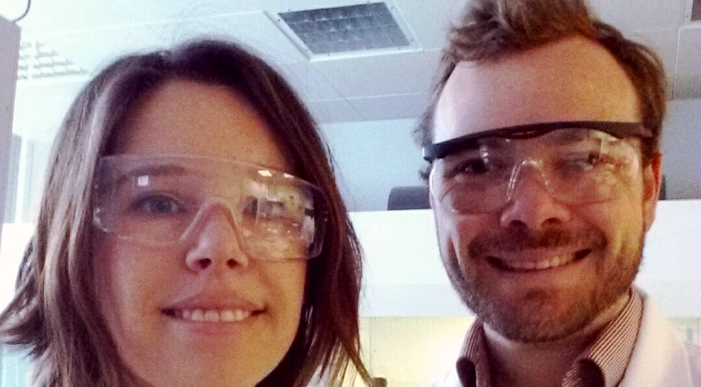News
3D printing bone tissue
Jun 28 2022
“Don’t be afraid to reach out to people and show them what you have to offer their research, as an early career researcher you need to put yourself out there!”

Two of ACES’ star alumni have received prestigious Marie Curie fellowships at Imperial College, in London, each being awarded a two-year deal adding up to about E200,000 in funding.
Peter Sherrell will work with Dr Cecilia Mattevi on 3D printing graphene structures. Meanwhile, Amy Gelmi will work in the lab of Prof Molly Stevens, one of the world experts in biomaterials science.
The husband and wife team, who first met during their PhD studies at ACES Wollongong, moved to Europe two years ago. They have since had to overcome the ‘two-body problem’—namely, finding two research jobs in the same university (or at least the same town).
“In general it’s a difficult problem which we’ve been lucky to overcome,” said Peter. “However the strengths of our research record and references coming out of a Ph.D. at ACES and IPRI has helped enormously.”
Their first destination was Linkoping, Sweden, where Amy was offered a post-doc with long time ACES collaborator, Dr Edwin Jager. Her project, on developing new conducting polymer materials for tissue engineering, was a smooth transition from her ACES PhD work.
After contacting a range of researchers, Peter also managed to land a position at Linkoping. He brought his ACES experience with carbon nanotubes and graphene to bear on a new challenge—developing a heart attack treatment using conductive gels. “These projects were very exciting and are currently moving into in vivo studies after promising results,” he said.
The couple’s European adventure is an important step in their academic careers, where overseas experience is so highly regarded. “We both decided to move overseas to further our academic careers and experience different cultures and environments,” said Peter. “It’s always been our game plan to maximise the potential of about 5 years of overseas postdoc experience before moving back to Australia.”
So, what can current PhD students or early career researchers do to maximise their chances of landing a big fellowship? “Attaining academic jobs is a slow process,” said Peter. “Start applying for jobs and grants about three to six months before submitting your thesis.” It took Peter about six months to set up his Linkoping job, while the Marie Curie took 18 months to organise.
Meanwhile, Amy emphasises the importance of grabbing every opportunity to meet and talk to academics. “Network, network, network!” she said. “When visitors come to your lab, research their background, and make yourself known. Down the track you might want to apply for a grant or a job with them.” Both of Amy’s postdoc supervisors had previously visited ACES Wollongong, and were already aware of her work due to Prof. Wallace’s conference presentations. “Don’t be afraid to reach out to people and show them what you have to offer their research, as an early career researcher you need to put yourself out there!”
First week’s impression at Imperial? “Intimidating, in a good way!” said Amy. “Lots of excellent science and enthusiasm, and I can’t wait to get established in the lab.”
There is a palpable “culture of excellence,” Peter added. “It’s feels like a place where, if you put in the work, you can get brilliant results.”













